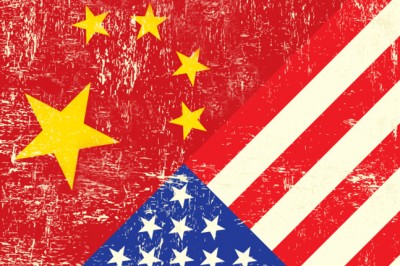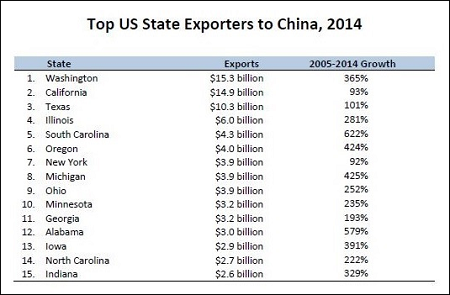U.S. Economy: Potential Job Losses from China’s Devaluation

The Standard & Poor’s 500 stock index was down a meager -0.96 percent at the close yesterday on the news of China’s devaluation of its currency, the Yuan, but some noteworthy individual stocks took a more dramatic pounding. Apple lost 5.20 percent; Micron Technology was in the red by 4.99 percent; Yum! Brands closed down 4.87 percent while General Motors lost 3.48 percent. All of these companies rely on China as a major export market.
According to a March report from FactSet, “companies in the S&P 500 in aggregate generate about 10 percent of sales from the Asia Pacific region, most of which comes from China and Japan.” Some U.S. companies, however, derive a far greater percentage of their sales from China. According to Sue Chang, a MarketWatch reporter using data from FactSet, 52 percent of Yum! Brands sales come from China while 40 percent of Micron Technology’s are derived from China.
A slowdown in economic growth in China could also see individual U.S. states licking their wounds as well. The following statistics come from the US-China Business Council:
- Forty-two states experienced at least triple-digit export growth to China since 2005, and five states saw export growth of more than 500 percent over the same period.
- China was among the top three export markets for 39 states in 2014. That includes states that are not usually associated with strong China trade ties, including Minnesota, Michigan, New York, Alabama, Ohio, and South Carolina.
- In 2014, thirty-one states exported more than $1 billion to China.
The chart above shows the U.S. states that could be most dramatically impacted should China’s economic slump worsen. Washington state saw its exports to China grow from $3.3 billion in 2005 to a whopping $15.3 billion in 2014. Washington state’s major exports to China include transportation equipment, forestry products, computers and electronics, primary metal manufacturing, mineral and ores. In the span of one decade, the state’s exports to China grew by 365 percent versus its export growth rate to the rest of the globe of 148 percent.
South Carolina is another state that has experienced an outsized boost from exporting to China. From 2005 through 2014, its exports to China skyrocketed from $590 million to $4.2 billion. One of the popular exports to China is BMW cars and SUVs made at its Greer, South Carolina plant. BMW, a German automaker, last year announced that it would be investing another $1 billion in the Greer plant and add 800 additional workers, boosting total employment at the plant to 8,800 workers. South Carolina is also home to a sprawling Boeing campus in North Charleston where the 787 Dreamliner is made. In 2014, $2.8 billion of South Carolina’s exports to China were in the category of transportation equipment.
As foreign currencies decline in value to the U.S. Dollar, the ability of U.S. exporters to compete against foreign domestic goods priced in the cheaper currency becomes more difficult. An additional and serious risk to the U.S. economy is that these currency wars, which are actually trade wars to sustain or grab market share (think Saudi Arabia and oil) lead to a pricing war race to the bottom with the inevitable outcome of the U.S. importing deflation.


